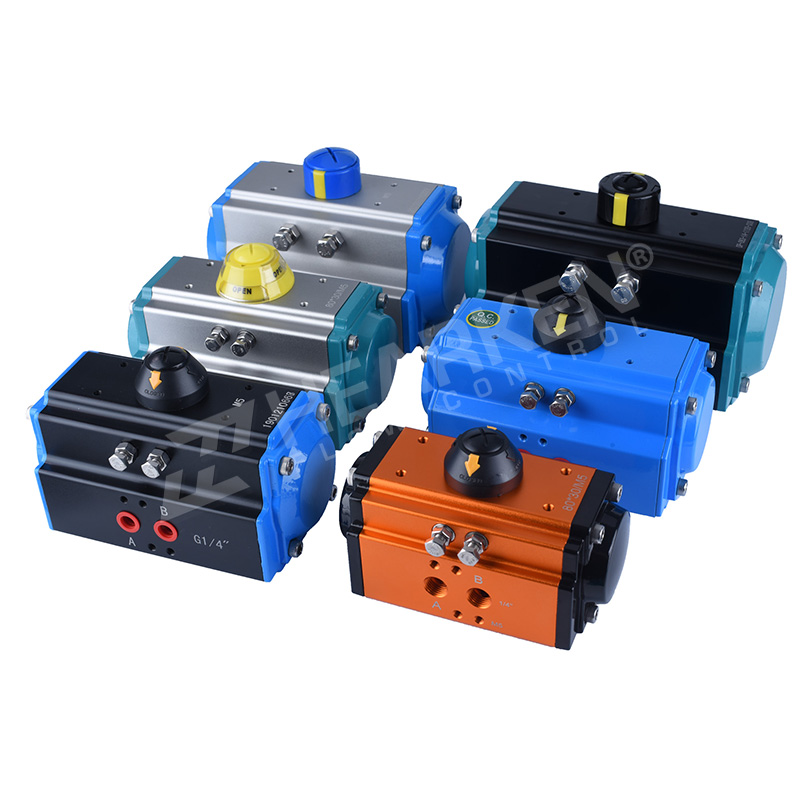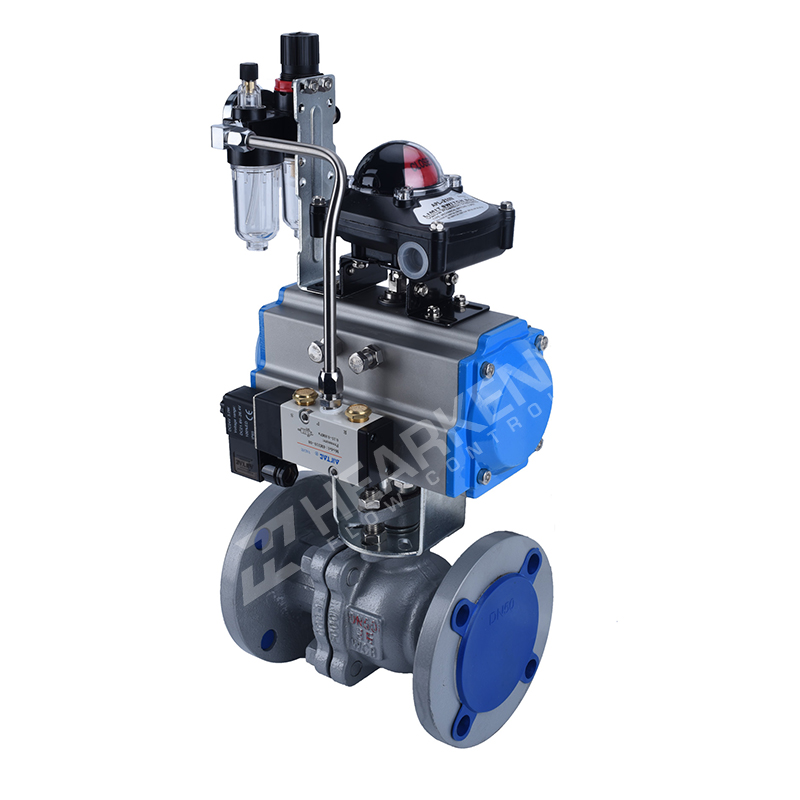Rack and Pinion Pneumatic Actuator
The first step is determining how much torque it takes to open and close the valve. The range of the safety factor, which is said to be between 15 and 20%, is usually suitable for most situations.
Then increase the safety value according to the fluid medium used by the valve. Increase the safety value by 20% for clean and lubricating media. Add 25% safety value for water vapor or non-lubricating liquid medium.
When using a non-lubricated slurry liquid media, the safety value increases by an extra 40%. When using non-lubricated granular media, the safety value increases by an additional 80%. When choosing a double-acting actuator, you need to use the air source pressure and the calculated torque value to look up the actuator's torque table. You canfind this table on the product page for the two-way actuator.

Rack and pinion pneumatic actuator structural features:
1.The extruded aluminum alloy cylinder's hard anodized body is wear-resistant.
2. A tiny, robust, symmetrical double-piston gear and rack with consistent output torque.
3. The cylinder block, end cap, output shaft, spring, and fastener are anti-corroded.
4. The spring is loaded and attached to the single-acting actuator, but it may be safely disassembled and reassembled.
5.ISO521 and NUMAR standardize installation and connection sizes.Solenoid valves and limit switches may be easily connected to AT160 pneumatic actuators. This makes the actuators versatile.
6.A building that looks pretty and delicate weigghs little and is watertight so that water can't get in.
7. Pneumatic actuators are available in high temperature type,low temperature type,normal temperature type and . It is recommended to use nitrile rubber under normal temperature conditions, and fluorine rubber or silicone rubber under high temperature or low temperature conditions.

Accessories available for pneumatic actuators:
1.A double-acting actuator is a control that can both opeen and close valves.
2. Single-acting actuator (spring return): When the circuit or gas circuit is cut off or there is a fault, the valve is automatically closed.
3. Double electric solenoid valve: One coil energized valve is closed, the other coil energized valve is opened, it has a memory function, and an explosion-proof solenoid valve can be provided according to demand.
4. Single solenoid valve: the valve opens or closes when the power is supplied, and the valve closes or opens when the power is off (explosion-proof type is available).
5. Limit switch box: remote transmission of the signal of the valve's open or closed position (explosion-proof type can be provided).
6. The electro-pneumatic positioner is in charge of regulating and controlling the flow of the medium through the valve based on how strong the current signal is (4-20mA).

7. Pneumatic positioner: adjust and control the medium flow of the valve according to the size of the air pressure signal (standard 0.02-0.1MPa).
8. Electrical converter: It can convert the current signal into the air pressure signal. It should be used in conjunction with the pneumatic positioner, and an explosion-proof electrical converter can also be provided as needed.
9. Air source treatment triple parts: including air pressure reducing valve, filter and lubricator, which play a role in regulating, cleaning and lubricating moving parts of air source.
10. Handwheel mechanism: automatic control can manually operate the opening and closing of the valve under abnormal conditions.